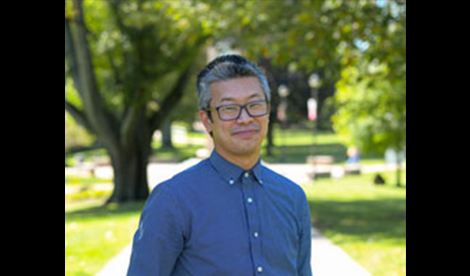News
An Opportunity to Learn About Being Asian American
By Jae Newman Director of International Engagement
Adjunct Professor of Creative Writing and Religion
May is Asian/Pacific Heritage Month. For most of my life, I have been trying to figure out whatever it means to be Asian American. I was born in South Korea and was adopted and raised in western New York. I know that Friday is pizza night, Rocky climbed some famous steps in Philly, and can go toe-to-toe with anyone on campus regarding obscure knowledge of the Buffalo Bills. And yet for most of my adult life I have experienced dislocation prompted through episodic micro aggressions and racist encounters. I’m not alone. I feel protective of a new generation of Asian-Americans–which includes my children–who are growing up in a world where on any given day they can be invisible, viewed as a “model” minority, or become blindsided recipients of racist comments.
The pandemic did not make matters any easier for many Asian-Americans. Imagine going to pick up your groceries and seeing people taking every measure to avoid talking to you. Imagine having to explain to your child why she’s being called “Coronavirus” by classmates who by all measures come from good families. No American should be told to go “home” when they already are. Racism, today, is more insidious than calling some by a slur.
In my own lifetime, I’ve seen the needle move slowly to recognize Asian or Pacific Islander people as fully American. In 1977, President Jimmy Carter authorized Pacific/Asian American Heritage Week. Thirteen years later, in 1990, Asian Pacific American Heritage Month became a regular event every May. Despite these authorizations for educators to share and celebrate the accomplishments of Asian Americans, how many of us have ever celebrated any Asian American during the month of May?
Growing up (as a soccer player), mostly I clung to Asian athletes as inspiration, and rooted for them to accomplish undeniable achievements. This, I figured, might help others envision how their American identities and Asian stories might finally fuse and fit together. Before Jeremy’s “Linsanity” occurred in 2012, I had to live on humbler means. When I watched Michael Chang play tennis in the 1990s, my heart would sit in my throat. When Michele Kwan kept chasing gold in each Olympic Games, my heart would harden, preparing for the worst.
Roberts Wesleyan University’s “global” kingdom sketched into the campus’ cultural DNA. In 1942, Chesbrough Seminary actually relocated six Japanese students to become part of its community during a time when internment camps were common and allegiance to one’s country caused suspicion among foreigners, perhaps especially Asians. Today, Roberts maintains its roots in historic Christianity, and offers its community members a rich history steeped in movements supporting women in ministry and abolitionist positions.
When I walk around campus today, I hope to live in a more dynamic, more diverse world where we can, in all our glittering differences, become unified in our love for Christ. Whatever the future holds for our institution, we must lean harder into the vision that all people are created in God’s Image, Imago Dei, and that we are all meant to be unified as a single body who work together for the flourishing of God’s creation. That means more than not supporting racism. It begins with celebrating our community, even those members who, for good reason, often feel on the fringe. Students today, again, need to find open arms from our community to show them how to be a Redhawk and a believer. This, I believe, is part of our transformation into a university that really embodies character in action, not just in principle.
Asian Pacific Heritage Resources:
Key Facts about Asian Americans - Pew Research Center
Resources for Teachers for AAPI Month
Films and Documentaries for AAPI
Why AAPI Month is in May
List of Asian American Poets
List of 25 Must Read Books by Asian and Asian American Authors
Asian Pacific American Association (Greater Rochester, NY)

